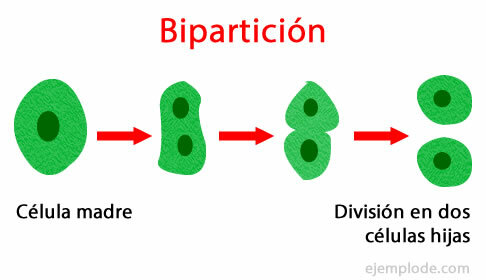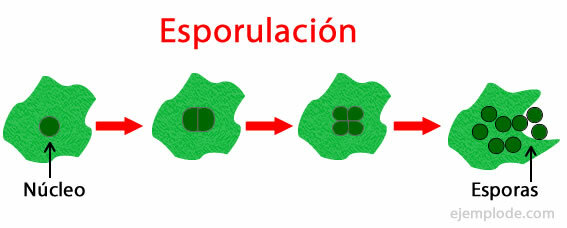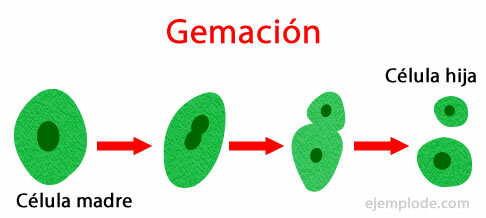Asexual Reproduction Example
Biology / / July 04, 2021
It has been called asexual reproduction to the reproduction that some biological beings have, which do not require the complementary gamete of the opposite gender indispensable in sexual reproduction.
Types of sexual reproduction:
As there are different types of asexual reproduction, they have been divided as follows:
- Bipartition.
- Sporulation
- Fragmentation.
- Gemmation.
- Parthenogenesis.
As will be seen in the examples, in these reproductions a single individual is needed, so the genetic information will be the same, becoming a copy.
Reproduction by Bipartition
The bipartition which is also called Binary fission, is the asexual reproduction carried out by biological entities such as:
- Unicellular algae
- Arches
- Bacteria
- Yeasts
- Protozoa
Is consists of the division of genetic information, which one cell divides into two, producing two cells with the same genetic information, the same size and the same shape.
- Its first process is the replication of the DNA and membrane growth.
- Its second process is the elongation of the membrane with the genetic information separated at the ends.
- Its third process is the separation forming a ring called "septum”.
- Its fourth process is the formation of walls that cover the ring.
- Its fifth process is separation, which forms the so-called "daughter cells"Which are the result of the division of the initial cell, called"stem cell”.

Reproduction by sporulation
In this reproduction the biological entity produces spores in a series of organs called sporangia, they break them when the spores are mature and finally it releases them.
In this type of reproduction, it is necessary for the spores to reach the appropriate medium, since if they are not found in it, the new individual is not generated.
The process begins with the meiosis, which duplicates information and genetic material.
Then there is the formation of the septum of the spore where the genetic material is separated.
There the genetic information, the cytoplasm and the spore membrane are surrounded by another membrane, which finally forms the forespore that is released.
Upon reaching the environment, it grows forming an individual equal to the original in genetic information.
This reproduction occurs in different biological entities such as:
- Algae
- Ferns
- Mushrooms
- Lichens
- And in exceptional cases in some higher plants when they have an asexual phase.

Reproduction by fragmentation
Reproduction by regeneration or fragmentation is called reproduction that begins when a part of an individual is sectioned and another identical organism is produced from this section.
This type of reproduction occurs in animal organisms such as starfish and some types of worms and in some types of plants, which are capable of generating roots from a branch generating another complete plant, as it happens with:
The colorful tree (Erythrina coralloides)
The fig trees (Ficus carica) Y
The climbing ivy (Hedera helix).

Reproduction by budding
This reproduction consists of the formation of another individual with the same genetic information that grows as an appendage of the initial organism. This part or new individual has been called "bud”And this can generate new individuals separated from the original part or even being still as an appendix.
This phenomenon occurs in living beings such as:
- Some jellyfish
- Some types of mushrooms
- Corals
- Sea sponges
- The Hydras

Parthenogenesis:
This is a means of biological reproduction that has been classified as asexual, due to the fact that only the female gamete intervenes, where it divides without the intervention of the male gamete.
This type of reproduction is found in some living beings such as:
- Bees
- Aphids
- Branch insects
- Some seaweed
Bees.- Bees reproduce initially by laying eggs without insemination of the male.
The male that is born can become a drone and when copulating with the Queen, they produce the new offspring already with fertilized eggs with 32 gametes, which produce worker bees which are always female and sterile.

Aphids.- Aphids have two phases of reproduction by parthenogenesis, the first begins when spring arrives, where the female aphid generates identical copies of herself, in the form of small aphids to which she gives birth directly.
At the end of spring, male aphids also begin to be produced by parthenogenesis, which appear in summer and are also calved.
Finally, as winter approaches, they end their reproductive cycle, generating aphids by reproduction. sexual, which is already winter resistant, allowing the species to reach the new cycle reproductive.


